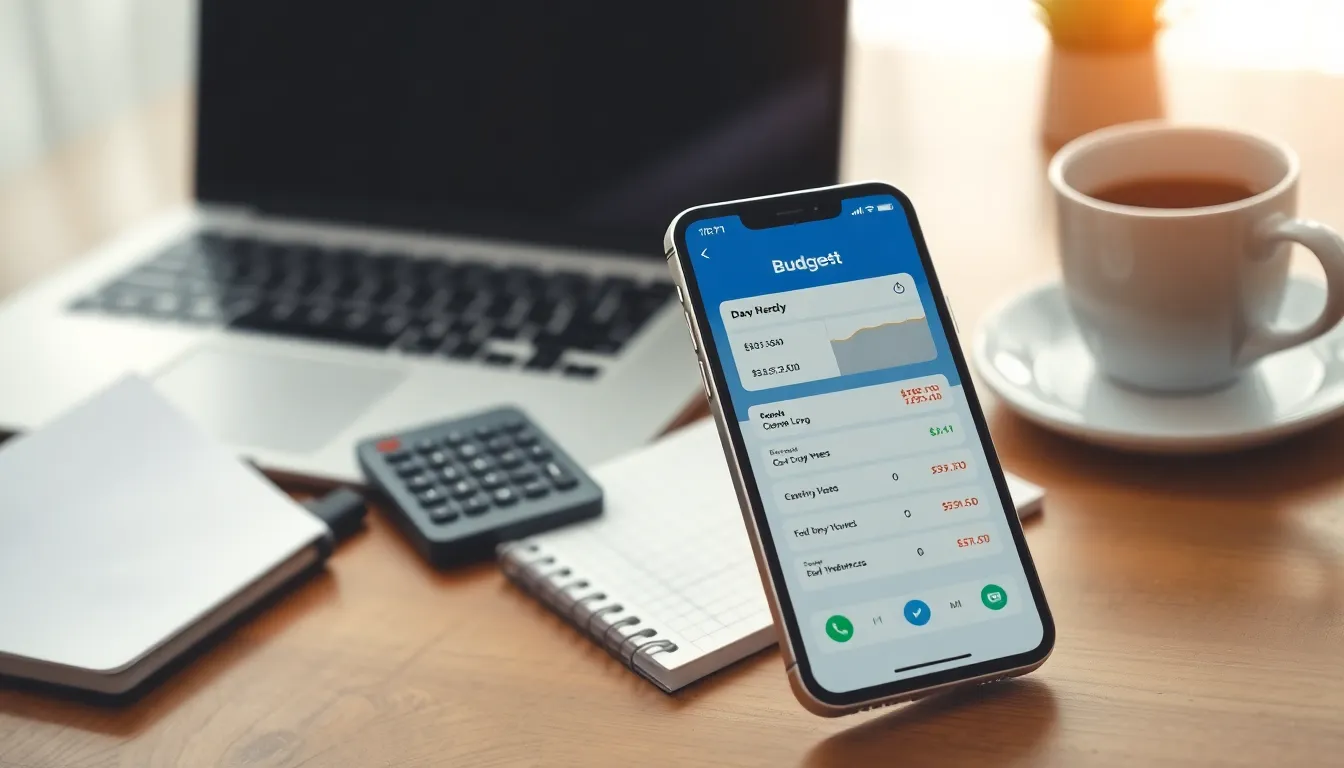In today’s fast-paced world, managing finances can feel overwhelming. With rising costs and ever-changing expenses, budgeting apps have emerged as essential tools for anyone looking to take control of their money. These apps simplify the budgeting process, making it easier to track spending, set financial goals, and save for the future.
Budgeting apps cater to a wide range of users, from students to families to seasoned investors. They offer features like expense tracking, bill reminders, and personalized insights, empowering users to make informed financial decisions. As technology continues to evolve, these apps are becoming more intuitive and user-friendly, ensuring that anyone can navigate their financial landscape with confidence.
Table of Contents
ToggleOverview Of Budgeting Apps
Budgeting apps assist individuals in managing finances more efficiently. These applications simplify the budgeting process by providing tools for tracking expenses, setting financial goals, and monitoring savings. Users can categorize transactions, visualize spending patterns, and receive alerts for upcoming bills.
Popular budgeting apps include:
- Mint: Offers comprehensive expense tracking and provides insights into spending habits.
- YNAB (You Need A Budget): Focuses on proactive budgeting and encourages users to allocate funds for specific expenses.
- PocketGuard: Simplifies budgeting by showing how much spendable income remains after bills and goals.
- EveryDollar: Emphasizes zero-based budgeting, allowing users to assign every dollar to a purpose.
- GoodBudget: Uses the envelope budgeting method for efficient cash management.
Budgeting apps cater to different needs, making them suitable for students, families, and seasoned investors. Many of these apps integrate with bank accounts, allowing for real-time updates on account balances and transactions. Features like cloud synchronization ensure users have access to financial data from multiple devices.
As technology evolves, budgeting apps become more intuitive. Enhanced user interfaces and customizable features increase accessibility, enabling users to manage their financial situations with confidence.
Features To Look For

Choosing the right budgeting app involves recognizing key features that enhance the user experience and improve financial management. Certain features significantly contribute to an effective budgeting strategy.
User Interface
User interface (UI) design plays a crucial role in user satisfaction. Look for apps with intuitive navigation that allow easy access to essential functions. Apps featuring clean layouts, well-organized menus, and visually appealing design elements enhance the overall user experience. Responsive design also ensures compatibility across devices, making it easier for users to manage finances on smartphones, tablets, or computers.
Security Measures
Security measures are vital for protecting sensitive financial data. Seek apps that use encryption to safeguard personal information and financial transactions. Look for features such as two-factor authentication (2FA) and biometric login options, which provide an additional layer of security. Regular software updates from app developers ensure vulnerabilities are addressed promptly, enhancing data protection.
Integration With Other Tools
Integration with other tools streamlines financial management. Choose apps that can connect seamlessly with bank accounts, credit cards, and payment platforms for real-time updates on spending. Look for compatibility with financial planning tools, accounting software, or investment apps. Integration enables users to consolidate their financial data, promoting an all-in-one view of their financial situation.
Popular Budgeting Apps
Many individuals rely on budgeting apps to streamline their financial management. Below are reviews of popular budgeting apps, highlighting their unique features and functionalities.
App A Review
Mint stands out for its comprehensive features that allow users to track expenses, create budgets, and monitor credit scores. Users can categorize transactions for better visibility of spending habits. Mint also sends alerts for bill payments and unusual spending, improving financial awareness. Users appreciate the app’s integration with multiple bank accounts, enabling real-time updates. Additionally, it’s free to use, making it accessible to a wide audience.
App B Review
YNAB (You Need A Budget) emphasizes proactive budgeting by allocating every dollar to specific categories. Users participate in a unique budgeting philosophy that encourages saving for expenses before they occur. YNAB’s reporting tools help users analyze spending patterns and adjust budgets as necessary. The app supports cloud functionality, allowing access across devices. A subscription fee applies, which some users find worthwhile for the extensive features offered.
App C Review
PocketGuard offers simplicity with its straightforward design, focusing on the user’s disposable income. The app shows how much users can spend after accounting for bills, goals, and necessities. Users benefit from features like automatic expense categorization and bank link integration for accuracy. PocketGuard’s unique “In My Pocket” feature allows for quick financial assessments. The free version provides essential functionalities, while a premium option expands the tools available for users.
Benefits Of Using Budgeting Apps
Budgeting apps provide numerous advantages that enhance financial management.
- Expense Tracking: Budgeting apps allow users to monitor their spending in real-time, categorizing expenses for a clear overview. Users see where money goes and make informed choices.
- Financial Goal Setting: Achieving financial goals becomes easier with budgeting apps. Users set specific targets such as saving for vacations or paying off debt. Apps help track progress towards these objectives.
- Time Savings: Automating budgeting tasks saves users significant time. Apps automatically import transactions and generate reports, reducing manual entry efforts.
- Increased Accountability: Users hold themselves accountable for spending habits by tracking finances. Regular monitoring encourages mindful spending and adherence to budgets.
- Integration with Bank Accounts: Many budgeting apps sync with users’ bank accounts. This integration provides real-time updates on balances and transactions, enhancing visibility into overall financial health.
- User-Friendly Interfaces: Enhanced interfaces simplify navigation. Users enjoy a seamless experience, reducing frustration and increasing engagement.
- Security Features: Many budgeting apps prioritize user security. Effective encryption and two-factor authentication protect sensitive financial information from unauthorized access.
- Cloud Synchronization: Cloud-based functionality ensures users access their budget data from multiple devices. Whether on a smartphone or tablet, users stay connected to their finances.
- Customizable Features: Users tailor budgeting apps to fit individual needs. Customizable settings allow for personalized categories and alerts, fostering a unique budgeting experience.
- Educational Resources: Some budgeting apps provide educational materials. Users learn about financial literacy and budgeting strategies, enhancing their overall financial knowledge.
Budgeting apps present essential tools for effective financial management, catering to diverse users.
Budgeting apps have transformed the way individuals manage their finances by providing tools that simplify tracking and planning. With their user-friendly interfaces and customizable features, these apps empower users to take control of their spending and savings. As technology continues to evolve, budgeting apps are likely to become even more sophisticated, catering to a broader audience with diverse financial needs.
Investing time in finding the right budgeting app can lead to significant improvements in financial health. By leveraging the capabilities of these tools, users can make informed decisions and achieve their financial goals with greater ease. Embracing a budgeting app is a step toward a more organized and secure financial future.









